As you may know, pipes don’t last forever and can get damaged with time. Though they are produced from rugged materials that can help them last for many decades, at some point, they can get cracked and cause leakage.
Besides, the weight of the building and the soil can cause the pipes to crack and leak the water or the gas that is transported in them. In the beginning, the leaks may be small, and you may not notice them.
With time, these leaks become bigger and can cause a complete breakdown of the water supply in your building. Worse, it may cause an accident if the pipes are used to carry dangerous chemicals inside chemical factories.
Moreover, when the pipes are present underground, you may not beware of the leaks in the first place itself. This is when doing a hydrostatic test enables you to understand whether the pipes or your system has any leaks in it or not. A Hydrostatic test involves filling a system with liquid. A pressure is applied to the pipes or the system to find out its structural strength of it. Then an observation is done on the pipes & system to check if there are leaks or not, even though they may not be visible to the naked eye.
Hydrostatic Testing
Quick Navigation
In pressurized systems, hydrostatic testing is used to locate leaks. This method is commonly used to test fuel tanks, pipelines, boilers, plumbing, and gas cylinders. It may be performed on your home’s sewage line to check for leaks.
During a hydrostatic test, a liquid is put into a system. Once the system has been filled with fluid, it is pressed to guarantee it’s integrity.
The next step is to keep an eye on things. Even though no one can see it, a dip in the liquid level is an obvious indicator that liquid is seeping somewhere.
Shutdowns are required for hydrostatic testing. Hydro tests necessitate employees designing pressures to determine the integrity of gasoline tanks, especially during repairs. It entails using pressure-testing equipment that can endure the test without rupturing. Let’s have a look at how the testing procedure works now.
Hydrostatic Testing Fire Extinguisher
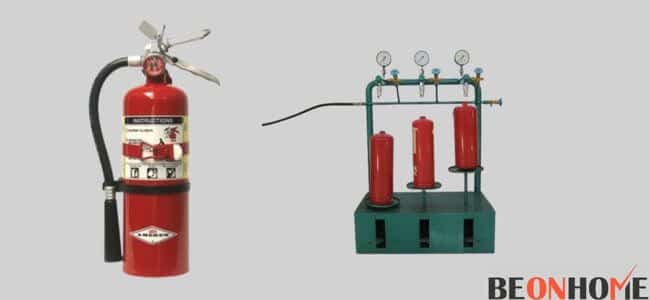
Hydrostatic testing is done on rechargeable fire extinguisher tanks to determine the cylinder’s capacity to hold pressure. Hydrostatic testing ensures the safety and efficacy of a pressurized fire extinguisher by checking for leaks and overall strength.
Hydrostatic Testing Of Oxygen Cylinder
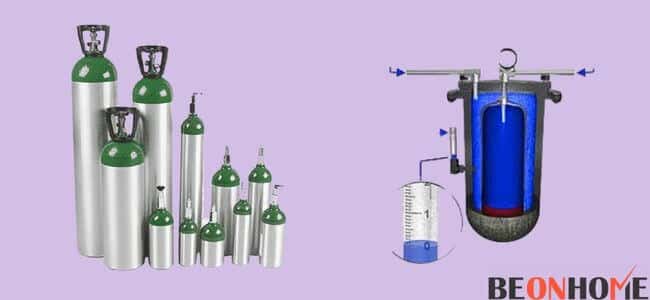
Oxygen cylinders are utilized for various applications, including industrial, and technical scuba diving. The tanks must be checked to ensure that they can safely retain the appropriate oxygen operating pressure.
The hydrostatic testing procedure is filling the tanks with water, sealing them, and immersing them in a water-filled hydrochamber.
The chamber is shut to test the structural integrity, and the tanks are pressured to a significantly higher pressure than the operating pressure.
The tank’s operating pressure is generally taken as complete pressure for operation. This guarantees that the tank can withstand far higher gas pressures than are generally necessary.
For better understanding let’s take a drill, an oxygen tank with an authorized operating pressure of 200 bar will be pressured to 400 bar during hydrostatic testing.
Before depressurizing the tank, hydrostatic standards state that the pressure must be sustained for considerable amount of time to allow the tanks expand at their capacity.
Hydrostatic Pressure Testing
Conducting a Boiler Hydrostatic Pressure Test is one of those safety regulations. Before the Boiler can be used, it must pass a test to confirm that it is complete, compliant, and safe. For a brief period, the Boiler is filled with distilled water and pressurized to at least one and a half times the maximum working pressure.
The hydrostatic pressure test is performed before the Boiler is commissioned for service, which means it is performed on a new boiler.
It is also necessary when repairs or adjustments are made; typically, it should be done every drydocking in the Marine Boiler’s instance.
It’s required to safeguard the safety of people and property in the area where the Boiler is located. Hydrostatic pressure testing is necessary to check for material deterioration in boilers and assure those who operate them.
Hydrostatic Tubing Testing

This method, also called hydro testing, directly measures a system’s hydrostatic pressure. The pipes or containers are filled with colored water to facilitate visual leak detection in this operation.
After that, we pressurize the vessels/pipelines to a specific test pressure to remove any remaining air in the system. In most cases, the system is pressurized to one and a half times the unit’s design pressure limit.
Following that, we check for pressure loss due to cracks or leaks. The leak site is apparent since the water has been colored with a colorant or tracer, and the vessel’s integrity is verified by measuring the system’s permanent deformation.
Hydrostatic Body Fat Testing

Hydrostatic weighing is the process of calculating a body’s weight and volume when submerged. As the name implies, it is also known as underwater weighing or hydro densitometry. Scales from the past do not offer reliable body fat measurements.
However, hydrostatic weighing is based on the Archimedes Principle, which asserts that “any item partially or submerged in a fluid, i.e., gas or liquid at rest,
is acted upon by an upward force equal to the fluid’s size.” It is one of the most accurate techniques to determine body fat, aside from contemporary technologies.
Keep in touch with us if you want to learn more about hydrostatic weighing.
It’s a technique for determining a person’s density or the ratio of body fat to lean mass. From the Archimedes principle, “the buoyant force exerted by water on a submerged item is equal to the weight of water displaced by the object.”
Now, we feed this information into the computer after determining the body density, and the program uses an algorithm to estimate the proportion of body fat.
How Is A Hydrostatic Test Performed?
Hydrostatic testing is used by plumbers to discover these hidden leaks. The intial step is to locate the cleanout in the drain line. The plumber inserts an inflated test ball into the cleanout. The sewage pipe is cut off by inflating the ball, usually at the foundation’s edge.
The plumber fills the main sewage pipe with water up to the top edge of the slab because it is clogged. The plumber monitors the water level to see whether it starts to fall. If it occurs, there’s a leak beneath the structure’s slab.
Now, moving further we have to determine the source of the leak. To locate the leak, one way is to feed a video camera down into the sub-slab pipes.
Step 1:
Fill the line slowly. This will increase the chances of getting aII air out of the conduit.
Step 2:
Fill the line to the lowest point possible while allowing air to escape at the highest point. Due to the line’s curve, many air release places may be available.
Step 3:
Make an effort to be patient. Allowing all of the air to escape and allowing enough time for any water to absorb into the cement liner are both advantageous.
Step 4:
The test pump should be attached at the line’s lowest position.
Step 5:
Before engaging with the line, prime the pump to eliminate any air.
Step 6:
The pressure gauge should be linked to the pipe at the lowest point (remember, the meter should be connected to the tube, not the pump).
Step 7:
As a result, the gauge reading will include all head pressure.
Step 8:
Before connecting the new line to a service line, it’s critical to separate it for pressure testing and allow it to be appropriately chlorinated and bacteria checked.
It may take any time between 30 minutes to 45 minutes, depending on the issue.
Why Is Hydrostatic Testing Done?
Hydrostatic testing is used to see if a house or structure with a sub-slab sewer system has leaky plumbing. Water is seen in an uncovered toilet drain, and a drop in water level indicates leaks in the old pipe.
If you leak your drain pipes, it’s most likely hidden beneath your foundation or in the region where the slab meets the foundation, where you can’t see it or notice signs of the problem.
It’s critical to know if you have leaks so that you can fix them for the sake of your home’s plumbing and to protect your foundation from further damage caused by under-slab leaks. Let’s look at five reasons why hydrostatic plumbing testing is beneficial. Moreover, you can also detect a hydrogen sulfide by getting a hydrogen sulphide detector under your budget.
Final Talk
Hydrostatic tests are vital for your property during foundation restoration for various reasons. The critical thing to remember about plumbing drain lines and your foundation is inextricably linked. They were joined to one another in several locations beneath your house when it was built.
Drain lines are installed before pouring a new foundation, and they go up through the foundation surface to the topside, where they link to your sinks, toilets, washing machine, and other plumbing fixtures. When a house’s foundation settles, and the house moves or sinks, the plumbing might move with it, causing damage and leaks where drain lines pass through the slab or where pipes meet.
Early detection of a leak is the only way to avoid thousands of dollars in foundation repair costs, so don’t wait! It’s highly worth getting a plumbing test before starting foundation repair.


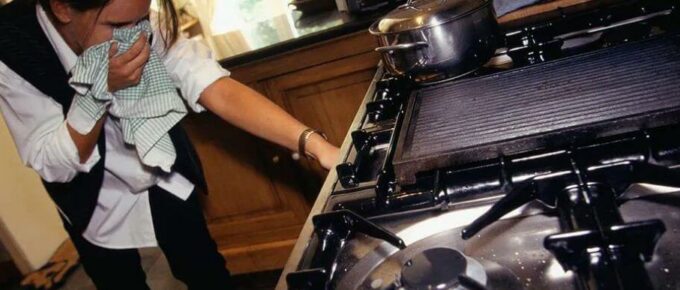
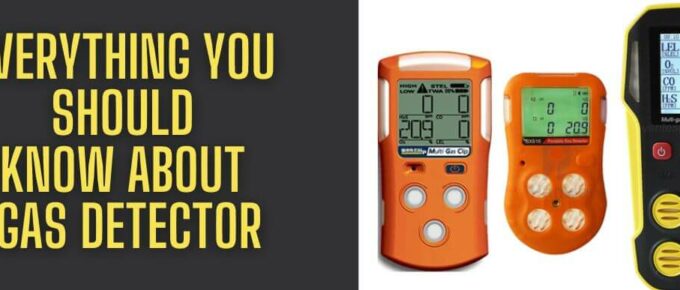
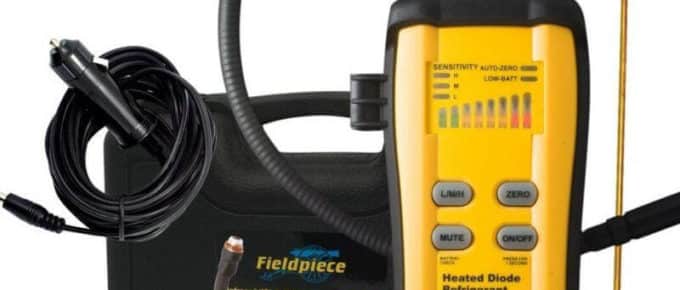


Leave a Reply